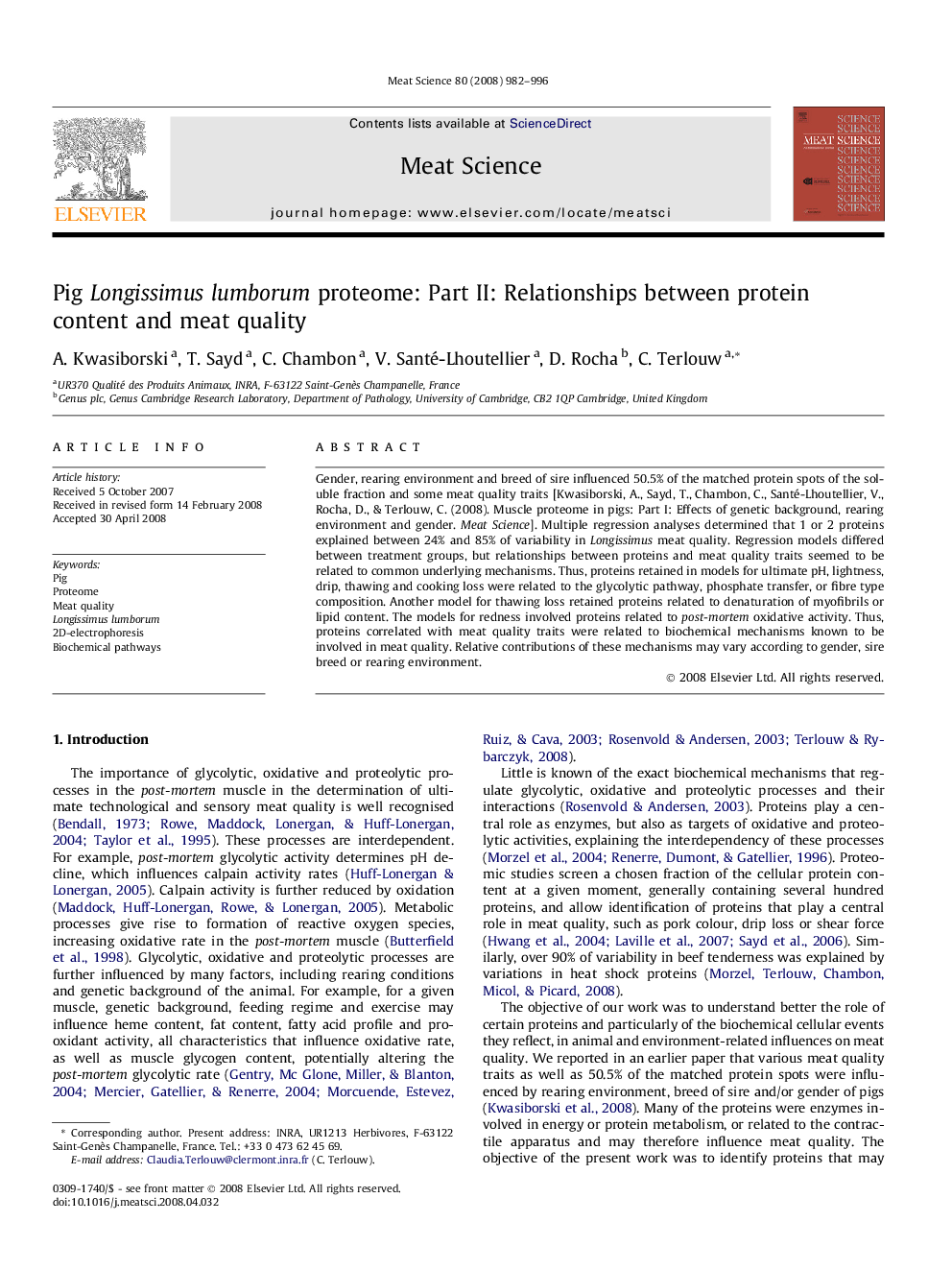| Article ID | Journal | Published Year | Pages | File Type |
|---|---|---|---|---|
| 2450667 | Meat Science | 2008 | 15 Pages |
Gender, rearing environment and breed of sire influenced 50.5% of the matched protein spots of the soluble fraction and some meat quality traits [Kwasiborski, A., Sayd, T., Chambon, C., Santé-Lhoutellier, V., Rocha, D., & Terlouw, C. (2008). Muscle proteome in pigs: Part I: Effects of genetic background, rearing environment and gender. Meat Science]. Multiple regression analyses determined that 1 or 2 proteins explained between 24% and 85% of variability in Longissimus meat quality. Regression models differed between treatment groups, but relationships between proteins and meat quality traits seemed to be related to common underlying mechanisms. Thus, proteins retained in models for ultimate pH, lightness, drip, thawing and cooking loss were related to the glycolytic pathway, phosphate transfer, or fibre type composition. Another model for thawing loss retained proteins related to denaturation of myofibrils or lipid content. The models for redness involved proteins related to post-mortem oxidative activity. Thus, proteins correlated with meat quality traits were related to biochemical mechanisms known to be involved in meat quality. Relative contributions of these mechanisms may vary according to gender, sire breed or rearing environment.
